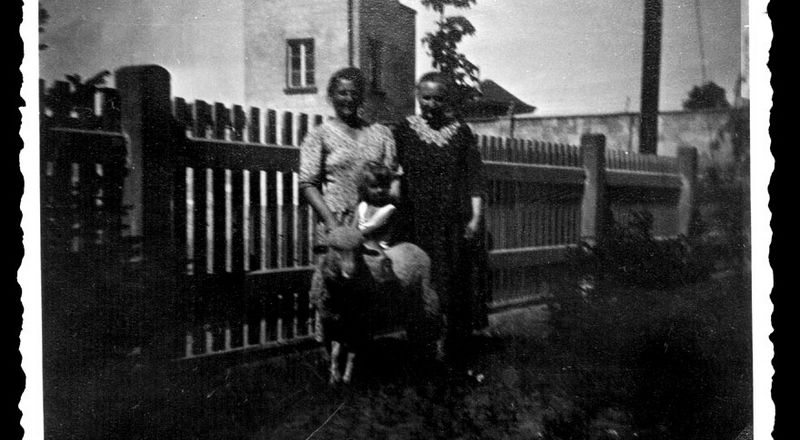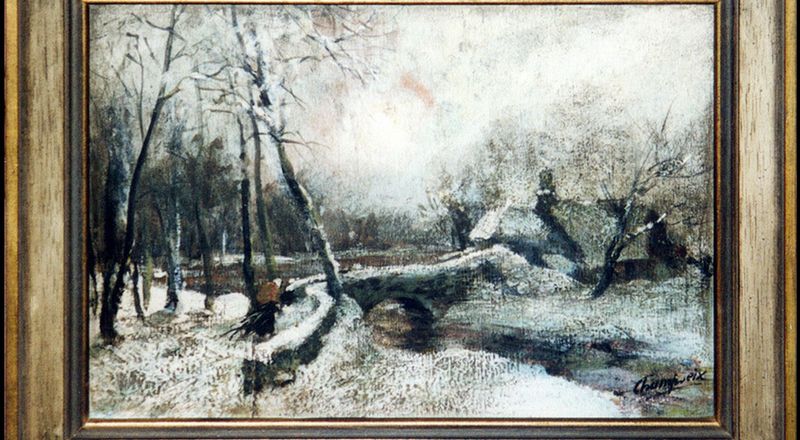The Town and the Camp. Oranienburg and Sachsenhausen Concentration Camp 1936–1945
The Town and the Camp. Oranienburg and Sachsenhausen Concentration Camp 1936–1945
7 Images
The exhibition is situated in the former Watchtower E at the northern tip of the camp triangle. It explores the question of what the people of Oranienburg knew about the concentration camp in their town and of their attitude to the inmates and the SS. To this end, onlookers and the indifferent, collaborators and profiteers are presented as well as people who helped inmates and those who opposed National Socialism.
Visitors are guided via a stairway past eight audio and video stations. These deal with topics including “Our Neighbours the SS”, the routes in the town along which inmates were marched, the self-representation of the SS, forced labour, the death of inmates and resistance by the Confessional Church community. Views towards landmarks in the surrounding country thematise the boundary between camp and town and its partial transgression. The restoration of the building was overseen by the architect Dr. Günter Hipfel, and the exhibition was designed by Gerrit Grigoleit.
The main focus of the exhibition is on interviews with contemporary witnesses from Oranienburg. Photographs, drawings by inmates and graphic displays are also shown along with animations in short film sequences. In two showcases, objects made by inmates can be seen, which were given as presents in gratitude for assistance rendered by individual people of Oranienburg. The exhibition bears witness to pogrom-like conditions in the streets of Oranienburg when
Jewish inmates arrived in September 1939, to the presence of concentration camp inmates in the town and to the smoke from crematorium chimneys, which at times hung over parts of the town.
The Oranienburg registry office officials are shown, who registered nearly 10,000 deaths in the camp up to October, 1942. After that, the SS ran their own registry office, in order to keep the rising number of deaths secret. Munitions firms in Oranienburg such as Auer and Heinkel profited from the forced labour of inmates as much as small and medium-sized businesses and the town itself, for which inmates laid pipes and built roads. The narratives concerning the protestant vicar of the Parish of Sachsenhausen and later Bishop of Berlin-Brandenburg, Kurt
Scharf, are of particular interest. Running the risk of being incarcerated in the concentration camp himself, he courageously confronted the SS. Very soon after the founding of Sachsenhausen Concentration Camp, he made efforts to provide spiritual care for the concentration camp inmates, but his request was summarily turned down by the camp Commandant, Karl Koch.
Kurt Scharf later managed, however, to visit protestant pastor Martin Niemoller in the camp. Niemoller was interned in the cell block of Sachsenhausen Concentration Camp on 2 March 1938 as a leading member of the Confessional Church and as “Hitler’s personal prisoner”. Following Niemoller’s internment, the Confessional community in Sachsenhausen began regular prayers for the inmates in the concentration camp and ringing the bells for them. The song “Village Bells”, based on a Russian folk song, was one of the favourite songs in the camp, with its third verse probably written by a German communist inmate in response to the bell ringing. The song can be heard in the exhibition.
The exhibition “The Town and the Camp” in Tower E avoids simple answers to the questions which it raises. But it shows using many examples what people saw and experienced and how they actually behaved – whether they looked away, took part in committing crimes or exploited the space created in the Nazi system. Not least, today’s visitors are confronted with the question, “How would I have acted then?”







